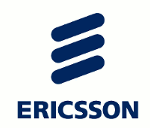- Notera att ansökningsdagen för den här annonsen kan ha passerat. Läs annonsen noggrant innan du går vidare med din ansökan.
Why is Ericsson a good place to work Ericsson enables communications service providers to capture the full value of connectivity. The company’s portfolio spans Networks, Digital Services, Managed Services, and Emerging Business and is designed to help our customers go digital, increase efficiency, find new revenue streams, and create new user experiences. Ericsson’s investments in innovation have delivered the benefits of telephony and mobile broadband to billions of people around the world ensuring our solutions – and our customers – are at the forefront of innovation. We support networks that connect more than 2.5 billion subscribers. With close to 100,000 employees and customers in 180 countries, we combine global scale with technology and service leadership. 40 percent of the world’s mobile traffic is carried over an Ericsson network. And, our Technology for Good and Connect to Learn programs include creating technology that makes it easier to save lives, feed societies, bring technology to emerging markets and connectivity to remote areas, and grow businesses and prosperity.This is an application for a WACQT (Wallenberg center for quantum technologies) Industrial PhD position at Ericsson Research, Research Area Cloud systems and platforms in Kista, together with the Department of Microtechnology and Nanoscience at Chalmers University of Technology. The targeted technical area for the position is “Distributed quantum computing with focus on quantum algorithms and software”. Background Many technological advances have been achieved since the first proposal of a potential quantum computer [1], [2], [3], [4]. We can now count on 10+ technologies that industry and academia are looking into with the goal of building a quantum computer. Some of them are targeting a ’universal’ quantum computing, some others a specialised quantum machine that will speed up specific problems. The basic element for any of these technologies is the quantum bit, qubit. Quantum bits are the quantum analog of the classical bits and thus the basic unit of quantum information. As in the classical domain, they are a two-level system which in this case need to obey the laws of quantum mechanics. Qubits can be realised with multiple technologies. For example, quantum dots are structures that can confine and manipulate a single electron to be acted as a qubit [5] ,[6]. Transmon qubits are another type of superconducting qubits that use Josephson junctions to create a single magnetic flux for use as a qubit [7]. This is the technology being used by Chalmers quantum computer system.Quantum computers or processors see applications within the field of chemistry [8]- [11], finance [12], optimisation [13], [14] and machine learning (ML) [15]- [22] and at Ericsson we have identified two use cases: i) Signal processing at the data-user plane radio access network (RAN) and ii) machine learning for fault/traffic prediction at the RAN control and management plane. Project goals Going one step further, we would like to link these quantum processors geographically distributed to act upon a single task, which means that we will need state and gate teleportation. The task we would like these two distributed quantum processors to perform is to simultaneously execute the 3-qubit Quantum Fourier transform algorithm and other quantum algorithms relevant for Ericsson.Quantum Fourier transform (QFT) is the quantum analogue of the discrete Fourier transform (DFT), which can map the signal from time domain to frequency domain with a much faster speed, even exponentially faster than the fast Fourier transform. The discrete Fourier transform currently runs in the Phy/L1 function of the radio access network. In the quantum world, the QFT algorithm can be built of a sequence of Hadamard gates and controlled phase gates. The Hadamard gate will create superposition and the phase gates will produce rotations. Thus, deterministic or heralded implementations of hadamard and controlled phase gates are of scope in this work.In order to execute the QFT algorithm and other machine learning algorithms in a distributed manner, we need a quantum software ecosystem in place. IBM and Rigetti are two of the most advanced software platforms using OpenQASM and Quil as quantum languages and python as a classical host language. Academia also proposes different software architectures, languages and compilers [23]- [35]. Thus, another goal of this thesis will be to study the software architectures in conjunction with Chalmers development of the quantum computer. Work description This PhD degree is based on the following milestones: 1. Software architecture and technology definition for distributed quantum computing 2. Quantum circuit design and execution of Ericsson relevant algorithms (Quantum Fourier transform, machine learning such as K-means clustering) to the Chalmers quantum computer system 3. Study new quantum algorithms and new software platforms for quantum computing Qualifications and experience• Master degree in one of the following areas: information and networking engineering, computer science, mathematics, machine learning, software engineering of distributed systems, physics.• Be proficient in algebra (vectors, matrices tensors, ket/bra notation) and be a self-learning and self-going person.• Be proficient in Quil and Open QASM, knowledge of Q# is advantageous.• Languages: the candidate must be proficient in the use of spoken and written English. Additional detailsThe work is expected to start in August/September 2019. The work is proposed for one PhD student for the duration of 3 years. The PhD student will have his/her regular working place at Chalmers and regular visits to Ericsson Kista will be scheduled for proper following up of student progress and ensuring transferring of results.Please submit your application in English as soon as possible - we are working continuously with candidate selection. Applications should include a short motivation letter, CV, and transcripts of records.

